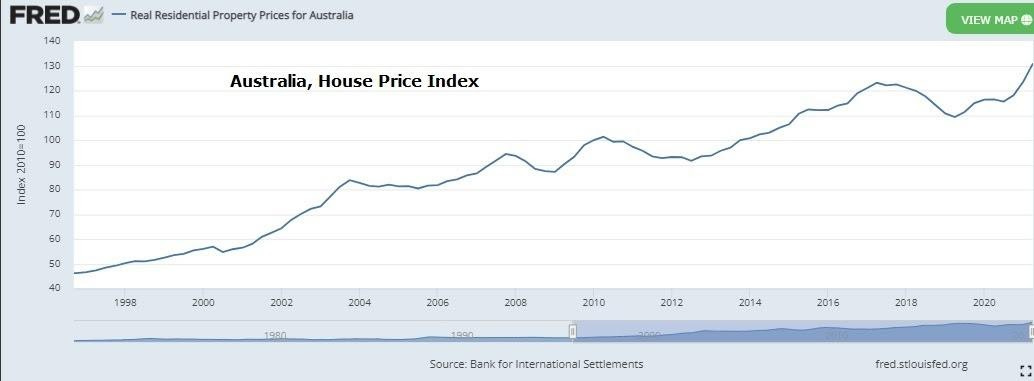With the Fed meeting today, bets were increased yesterday that we could see a first rate hike as soon as March (about a 35% chance). The market is now pricing in an 80% chance of a hike by June, it was a 50% chance yesterday morning.
Over the past six weeks, the consensus view in a Reuters economist poll has gone from the view of: no rate hikes until 2023, to a rate hike in Q4 of next year, to a rate hike in Q3 of next year. That view will likely get pulled forward again today.
Let's take a look at real estate, for some insight into what this might mean for record high prices.
The above chart is the Case-Shiller Home Price Index (index of 20 major cities) - it's 47% higher than the pre-financial crisis peak.
Does that mean it's a bubble? No. Even though money is easy, and the Fed is pumping liquidity into the mortgage bond market, it doesn't mean that risk in the housing market has elevated. You can see in the graphic below, the risk profile is very different, which aligns with the current environment of high creditworthiness (low debt service, high savings) and stringent lending standards (post-financial crisis).
The real estate bubble that popped in 2006 was primarily driven by credit agencies AAA stamping high risk/high yielding mortgage portfolios. With a AAA rating and a high yield, massive pension funds had no choice, if not an obligation to plow money into those investments. With that insatiable demand, mortgage brokers and bankers were incentivised to keep sourcing them and packaging them - so, whether it was fraud or incompetence (or both) somehow the ratings agencies survived.
Bottom line, this housing environment looks much less vulnerable to rate hikes.
What looks likely, in the face of a rate tightening cycle, is that real estate prices just stay persistently high, and even continue higher - driven by multi-decade high economic growth, massive new money supply floating around, and a very tight labor market. At higher rates, it will just cost more to live.
Consider this above chart of Australian housing prices. Pre-Global Financial Crisis, the fundamentals of the Australian housing market were every bit as dislocated as U.S. housing (housing price to rent ratio, home price to income ratio), but they didn't have a bust - it just kept going.
Let’s watch this space…







